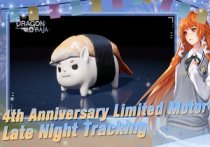MU Legend – First Look
Hey everyone! Colt here for MMOHuts.com and today we’re taking a first look at Mu Legend, an isometric action MMORPG from Webzen. The game’s been in Open Beta here in the States since November 7th, and I’ve spent the last 12 hours getting wrist deep in the thing to see how it handles.
When you first boot up the game, Mu Legend kicks off with a great looking animated cutscene to get you up to speed. Not to sound like an ad, but pretty is a word I’ll probably use a lot during the video. The game is gorgeous. Anyway, once you’re past the opening, you’re off to make your character. You’ll have 3 slots to make characters in the beginning, but you can purchase more from the in-game store if you feel the need.
You can choose to make your character one of five classes.
The Dark Lord is a heavy hitting tank with tons of health and AOE crowd control potential. This is the primary class I focused most of my time on, so it’s mainly what I’ll be covering.
The Blader is another melee class that focuses on big time damage while maintaining a fair amount of survivability. Not a real tank, but it certainly qualifies for bruiser status.
Warmages are glass-cannon AOE damage specialists. Lots of elemental magic and teleporting. This is the second class I focused on, so I’ll go a bit more in depth as we go on this.
Whisperers are ranger-style damage dealers with traps, bows, and nature magic.
Spellbinders are crowd control support specialists. They focus on debuffing enemies and buffing allies from the back line.
Also available from the class selection screen is a “recommended build” guide that shows you each of the classes’ main specializations and recommends skills and stats to build into for the best results.
Once you’ve chosen your class, you get access to the customization suite. I use the term loosely, though, as there isn’t a ton to do here. You can choose from around 8 faces and as many hairstyles. You can change the colors of your hair which is nice, and each of the classes has their own unique set of hair-styles to pick from.
Mu then throws you into its tutorial, but not as a beginner. Mu teaches you how combat should work for your class by putting you in control of a level 100 character with a player-chosen specialization and maxed stats and gear. You get a clear picture of how your skills will look and feel at max power but in an environment where you don’t have to know how everything works.
Completing the tutorial sees your character defeated by the God of Evil, but before the final blow is struck, you tear open a portal in time and head back to the past. You lose your memories and all your power and spend the game trying to unlock the secrets of your future-past and regain your true strength. Not the most original story-telling, but it works well for the setting.
From here, the gameplay is standard MMO fare with an ARPG twist. You complete quests of killing x amount of monsters and right clicking world objects to advance the plot and unlock new skills. There’s also a useful feature worth mentioning in regards to quest-givers. If you open your quest log and click on a quest, you can replay NPC dialogue to check for details you missed or keep up with the story.
Completing these quests and killing things grants you two different types of XP: character XP and soul XP. Each character level raises your base stats and helps you meet gear and dungeon level requirements. Each Soul level gives you points you can spend on specific stats. Think of these like runes from League of Legends. Each point alone isn’t worth a ton, but as you add them up into useful stats, it can be a huge difference-maker.
You also level up your skills by using them in combat; skills have three tiers and unlocking each grants a skill crest slot where you can socket a crest to grant a specific bonus to that skill. You can slot in bonuses to cooldown reduction, mana cost reduction, power, defense penetration, and all kinds of other stats.
Those aren’t the only skills you’ll have access to, either. As you level, you’ll gain access to Expert Skills. There are three in total per character; they’re granted at levels 25, 45, and 65. Each grants you passive bonuses intended for a certain specialization, but they also include a useable skill. Usually, this is one of the classes’ end-game staples.
The combat itself is par for the course with ARPGs. Use your skills and your auto-attacks to build combos and kill monsters. Standard mobs in the world don’t pose a massive threat unless they’re in large groups; Bosses are where the real challenge is, especially when you’re in multiplayer dungeons. These bosses spawn in their own separate rooms with no respawn points. If you run out of resurrection stones during the fight, you’re sent back to the last checkpoint and you’ll lose your progress in the fight. The rewards are often worth it though, with bosses dropping rare items frequently as well as Item Cubes that will grant you another random piece of loot.
If you should find your pockets overflowing with loot, especially the wrong kinds of loot, you can take them into town to have them dismantled into crafting elements. The game’s crafting system is straightforward and simple. You get crafting stuff from monsters and from dismantling items. You can use those to craft recipes you know. It doesn’t make things harder than they need to be.
Mu Legend offers another welcome change to the standard Diablo formula in the way of mounts; getting around the rather large area maps is somewhat tedious in the early going; once you get your mount around level 20 though it goes a lot faster. You also unlock pets around that time which will not only follow you but actually fight with you too. This came in handy for my Dark Lord as the extra damage was helpful.
The progression in the game overall goes at a standard rate. In the 12+ hours I’ve played so far, I’ve been able to level two characters to level 30. The game’s cap is 100, but it wouldn’t take super long to get there. That said, this is where the game’s monetization gets in the way of itself somewhat.
Most of the cash shop items are cosmetics. Mounts, skins for your wings, and costumes. However, you can subscribe to a Gold or Platinum tier service and receive bonus rewards. The Gold tier isn’t so bad. At most it grants you an extra tab in your personal inventory, and the ability to access things like mail and your stash remotely. You’ll also net some discounts for in-game auction/trading. Platinum tier is where things start to go off the rails a bit.
Platinum service nets you everything in the Gold tier as well as 5 percent bonus damage to monsters, 30 percent increase to Soul XP gains, and 20 percent increased uncommon item drop rate. Those might seem like drops in the bucket, but they are gameplay affecting so whether that’s a deterrent is at your discretion. You can also buy Inprint scrolls, which grant additional bonus stats to your gear, so there’s even more gameplay-affecting goodness for money. At the end of the day these aren’t substitutes for skill; all they really amount to is slightly faster character growth and PVE advancement. Again, though, whether you view this as a problem or not is entirely up to you.
If this sounds like something you want to get in on, you can head on over to the game’s website and take part in the currently ongoing open beta. Webzen has recently announced that they’re adding more servers to support the huge influx of new players they’ve been getting, so expect some brief periods of maintenance through the next week or so, depending on when you’re seeing this.
Videos You May Enjoy
Articles You May Enjoy
- Dungeon Fighter Online Releases Power Station Update
- Dungeon Fighter Online has released a new update today, introducing the Eton Industrial Area Act 3: Power Station.
- Torchlight Frontiers Reveals Relic Weapons for The Shared World ARPG
- Torchlight Frontiers will have some exciting weapons to collect, in the form of Relic Weapons, in the Shared-World ARPG.
- Ronda Rousey Named Taichi Panda Spokesperson
- Snail Games, developer of Taichi Panda, excitedly announced today the game’s new official spokesperson: UFC® women’s bantamweight champio...












